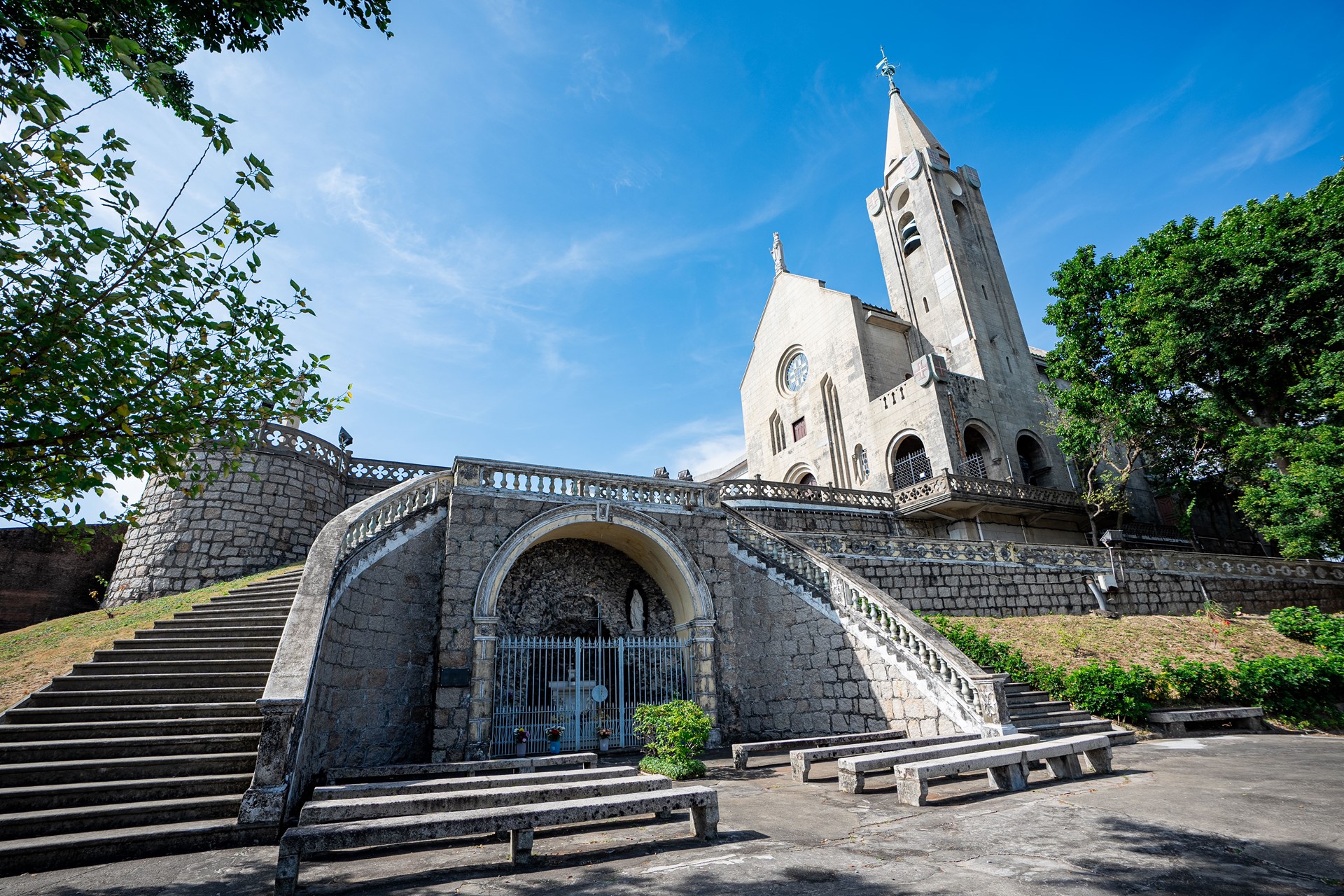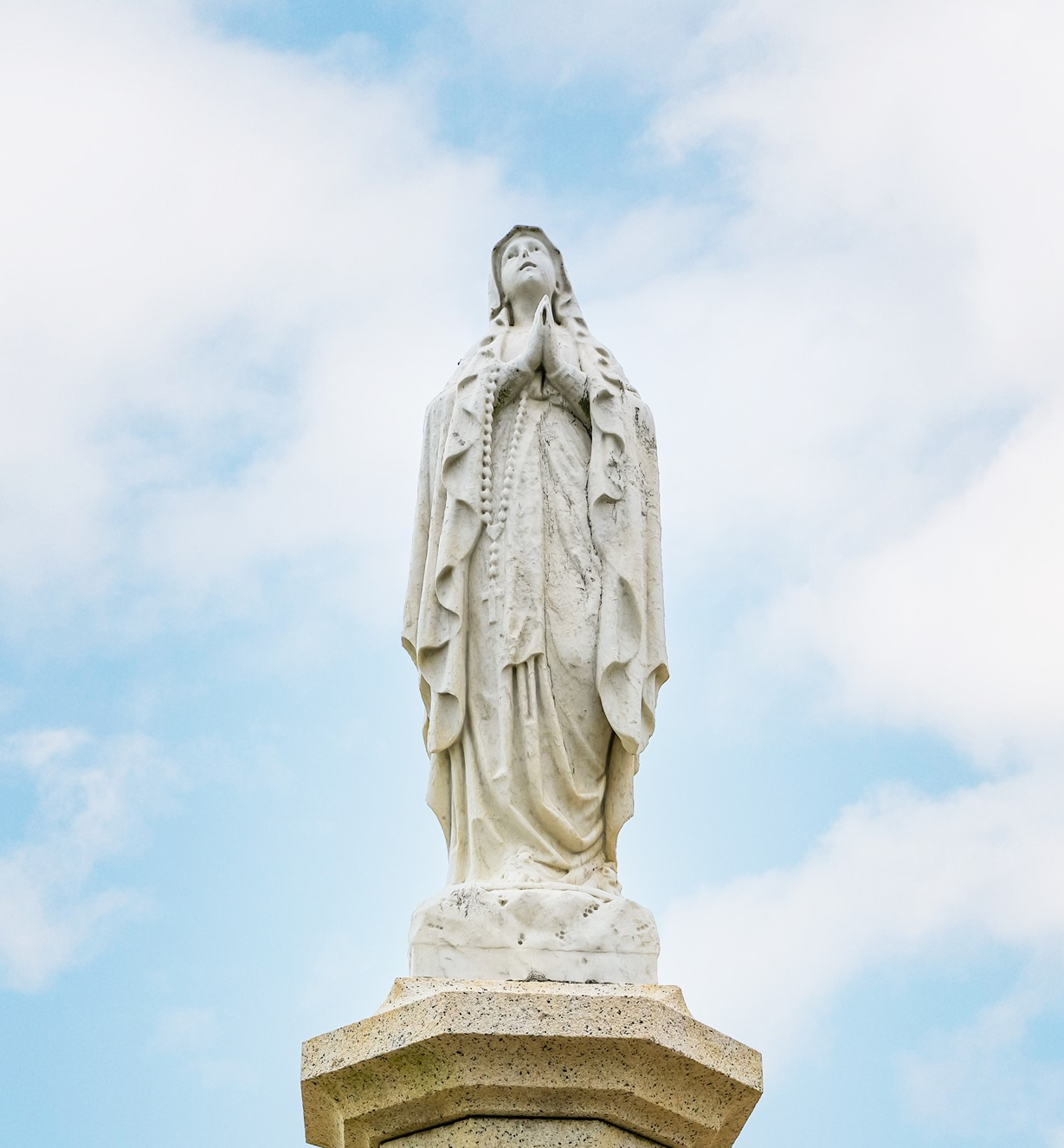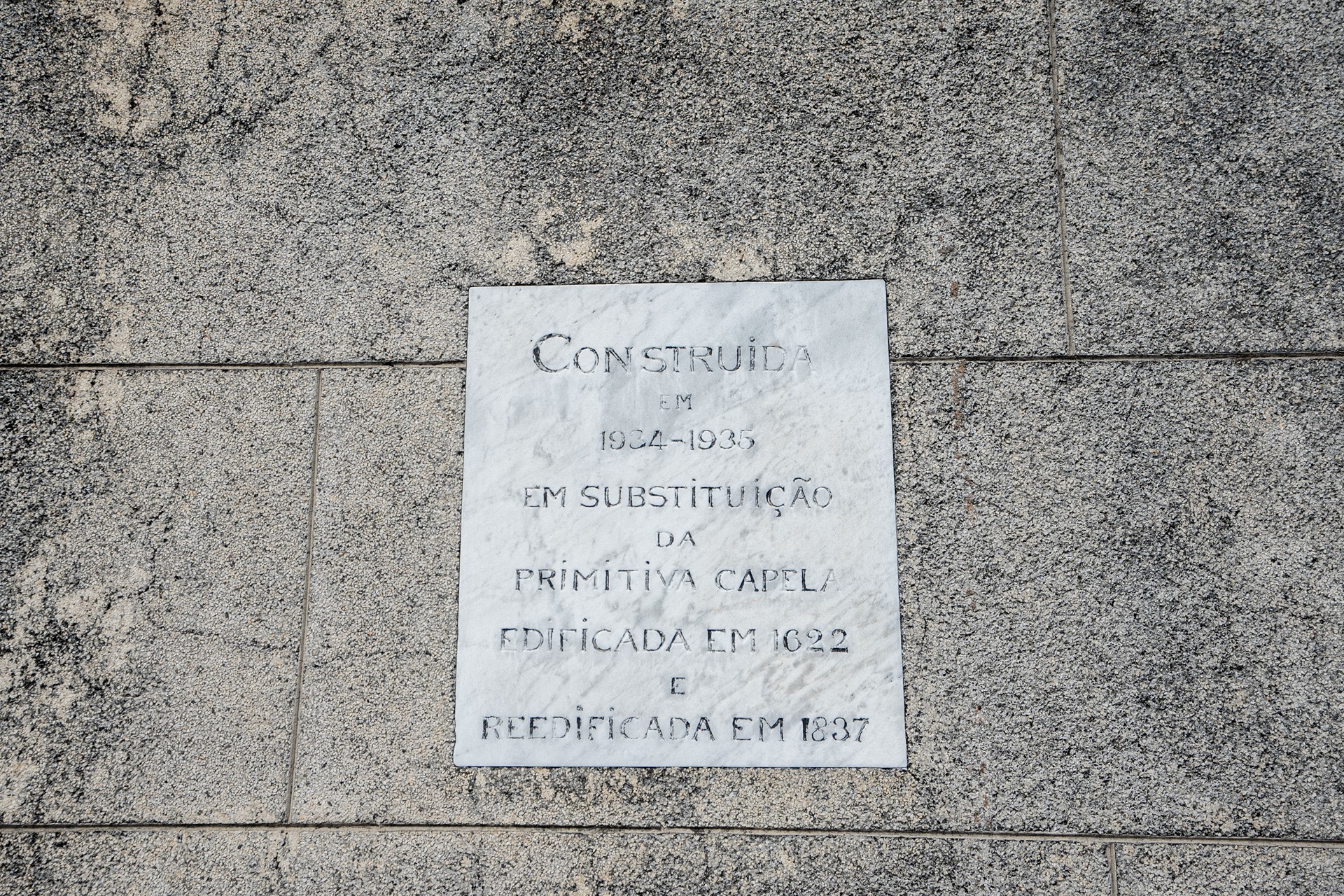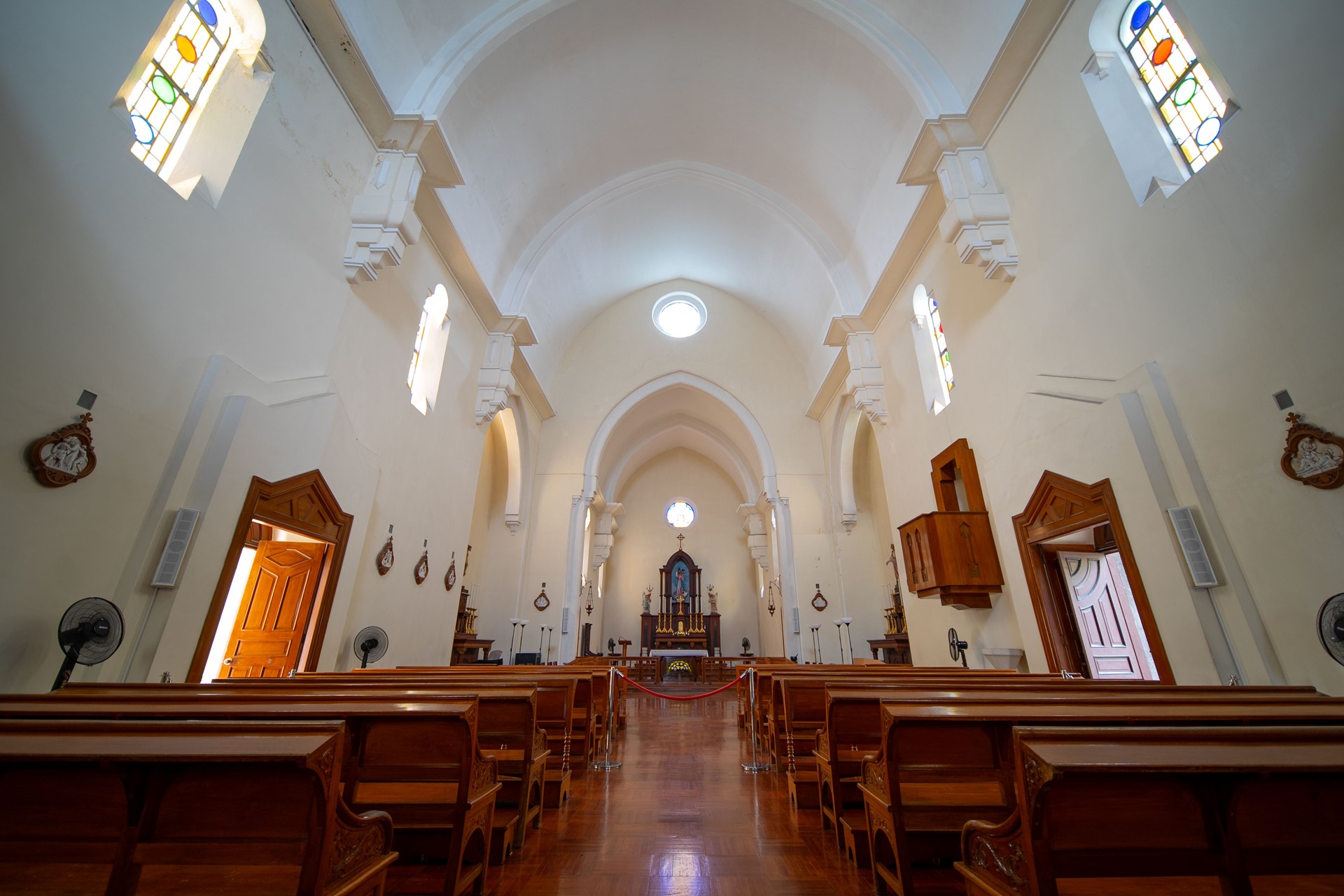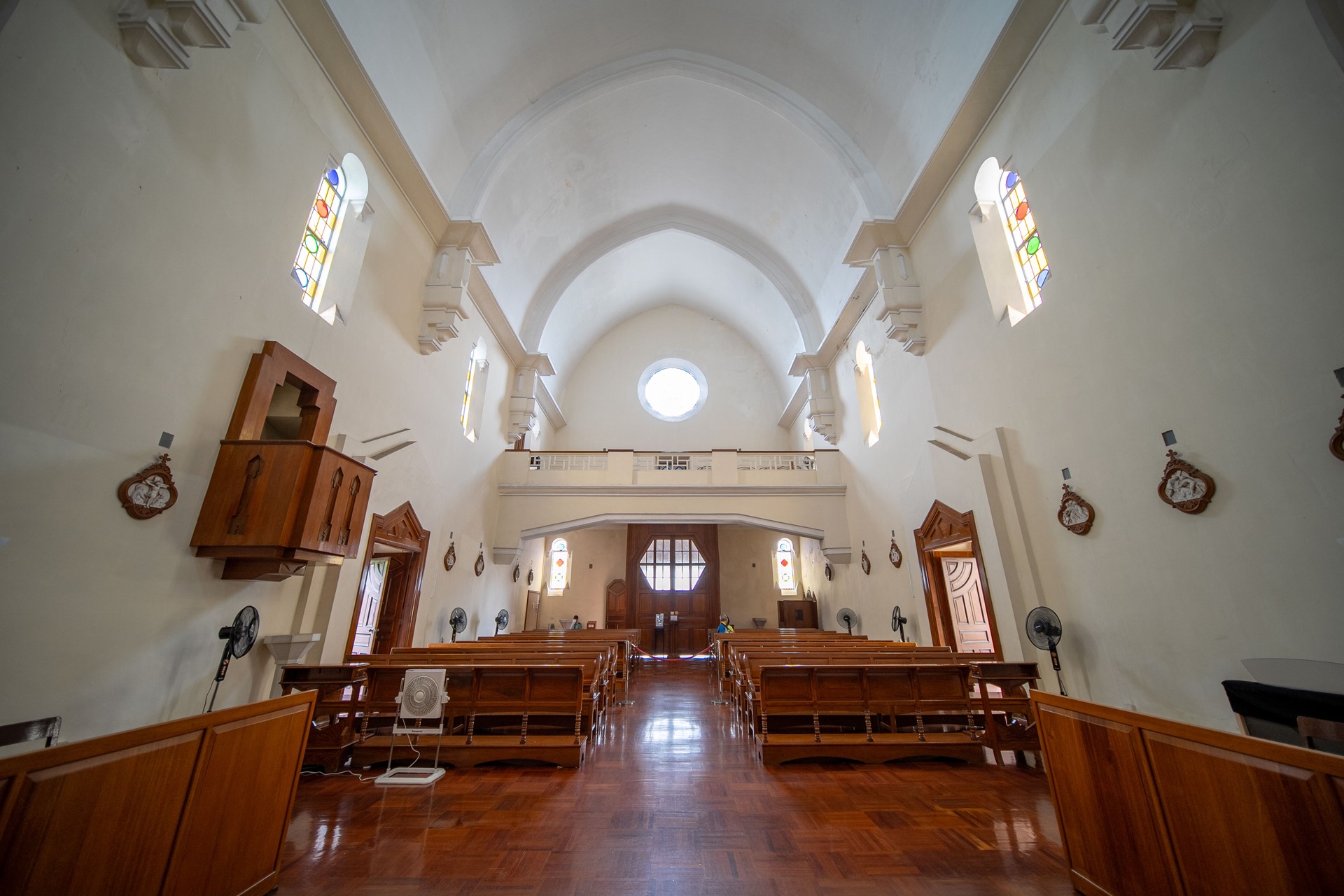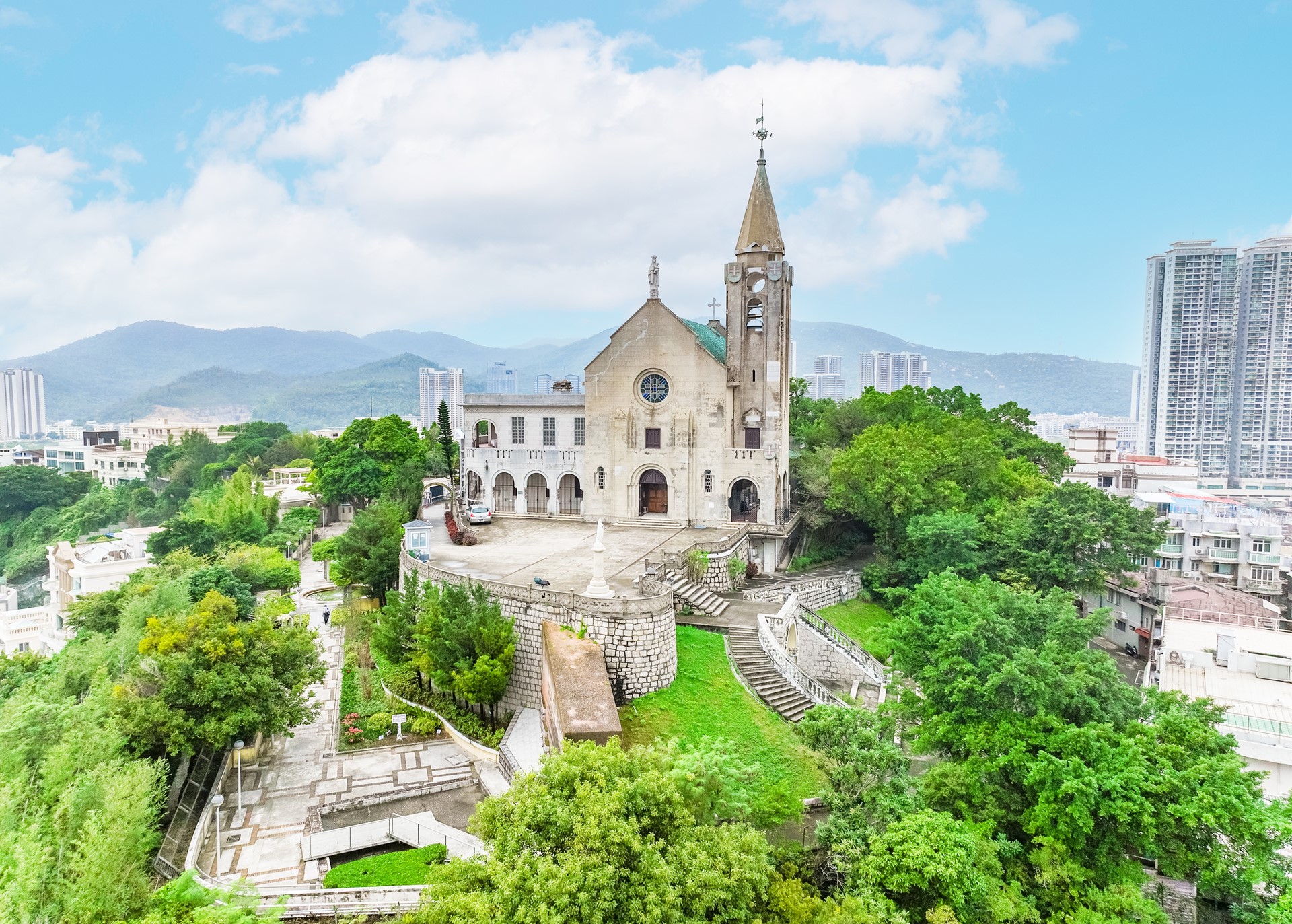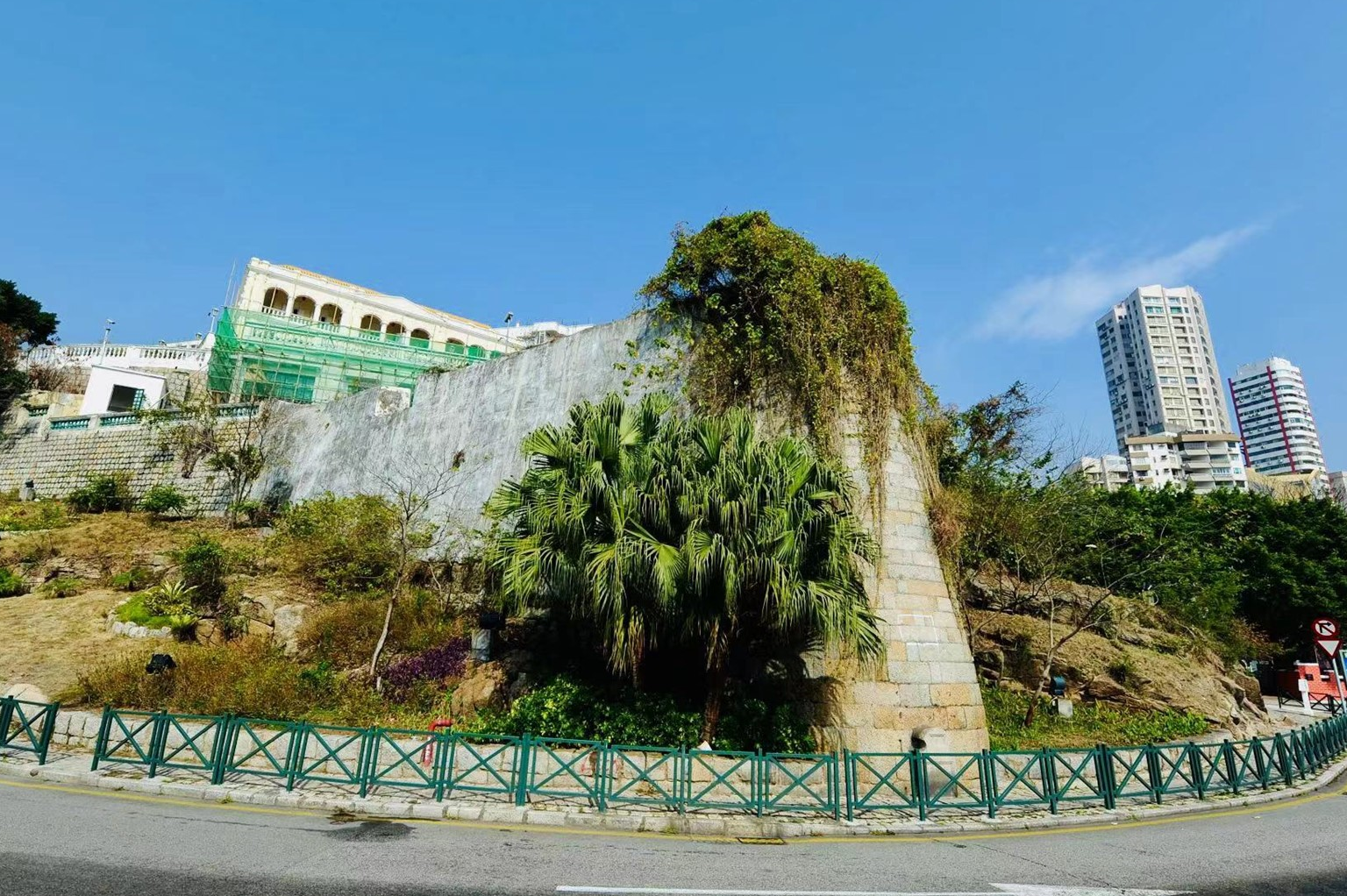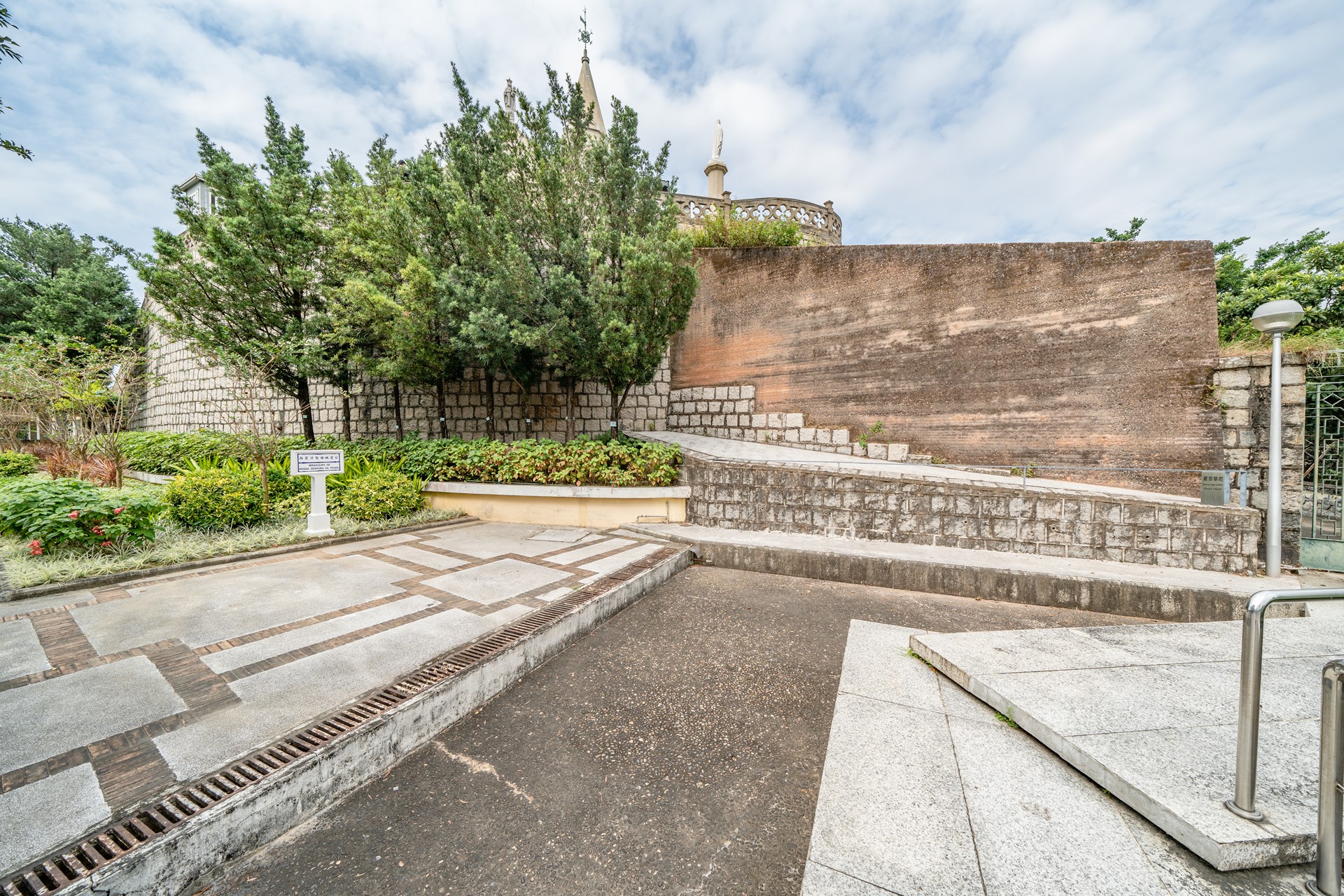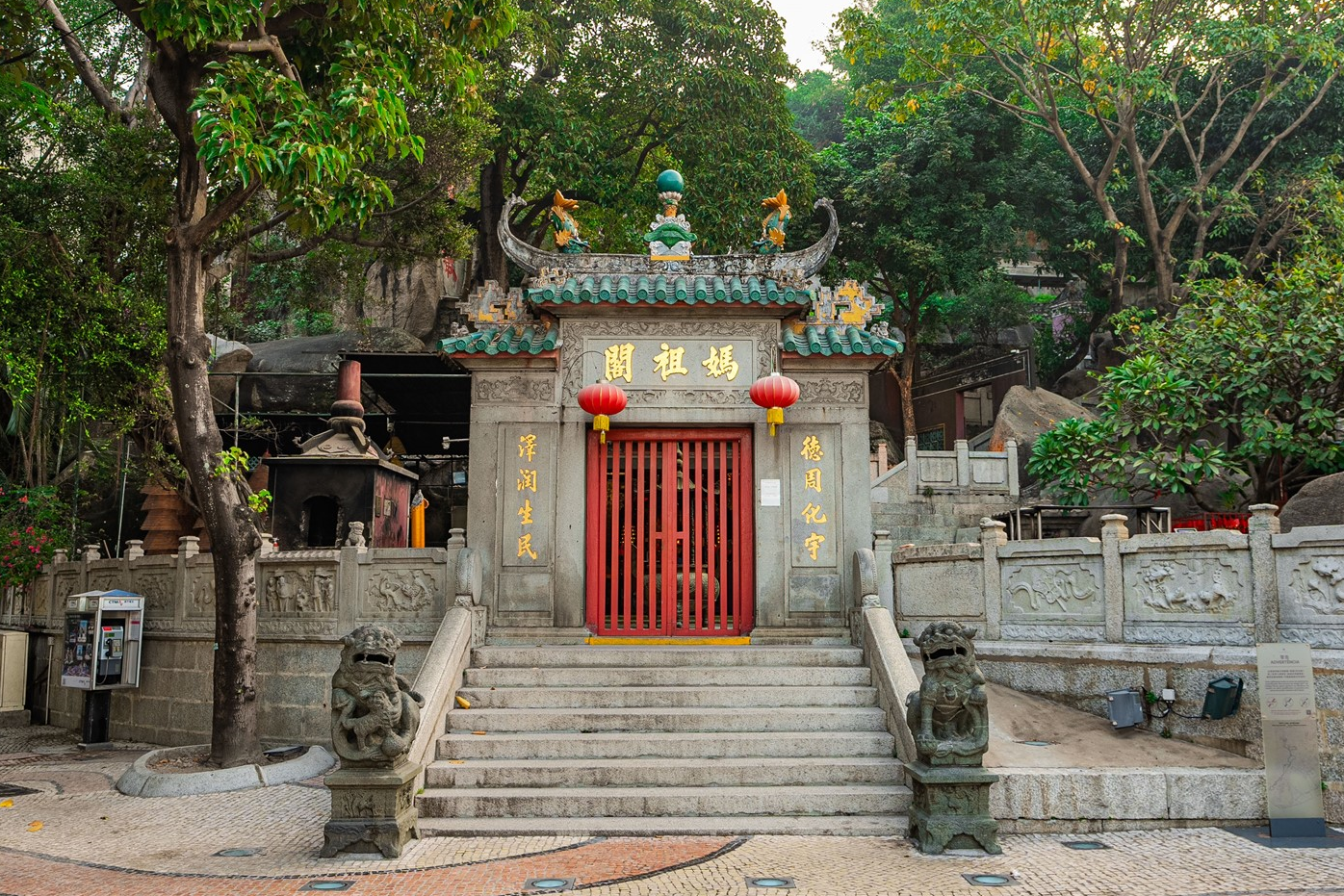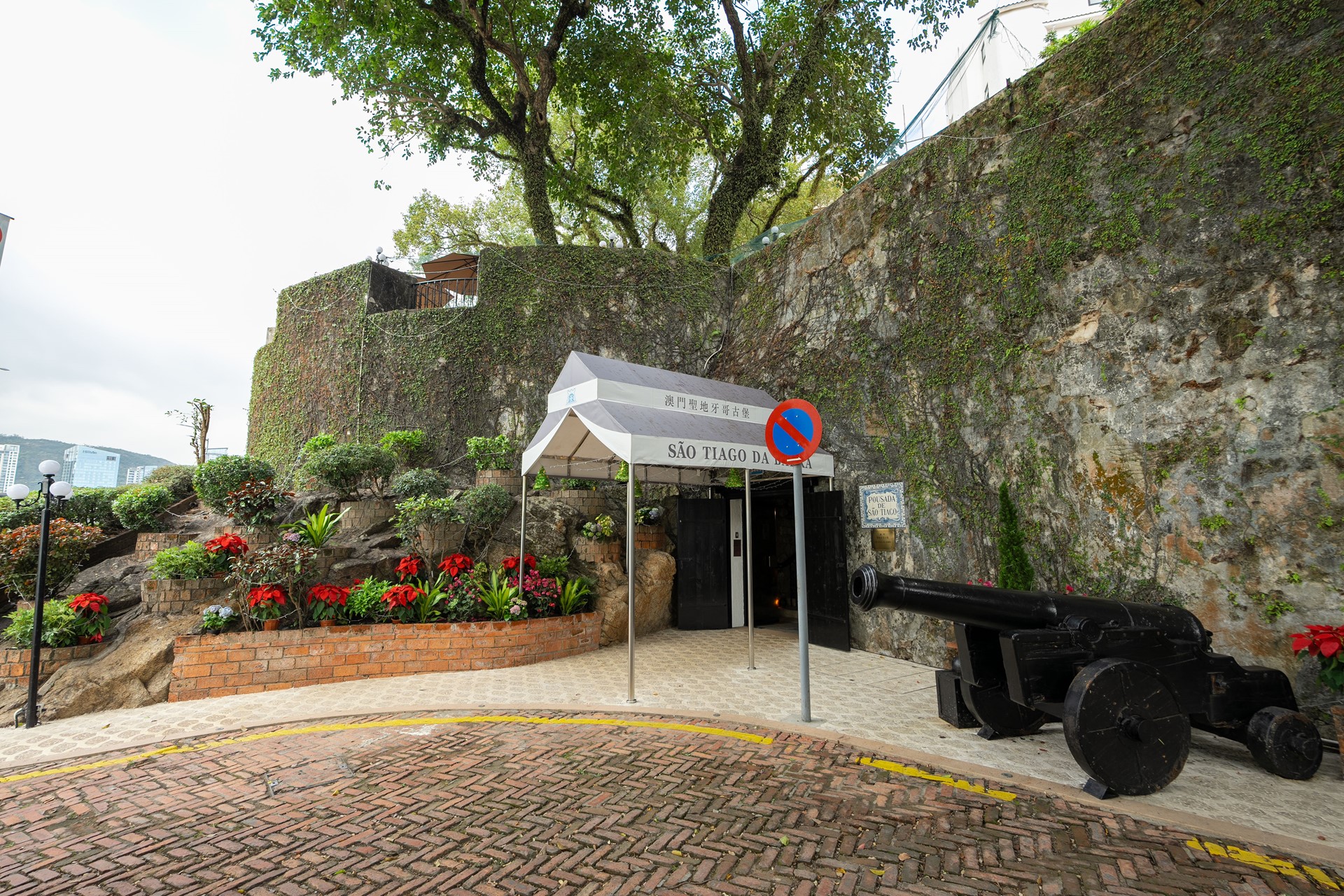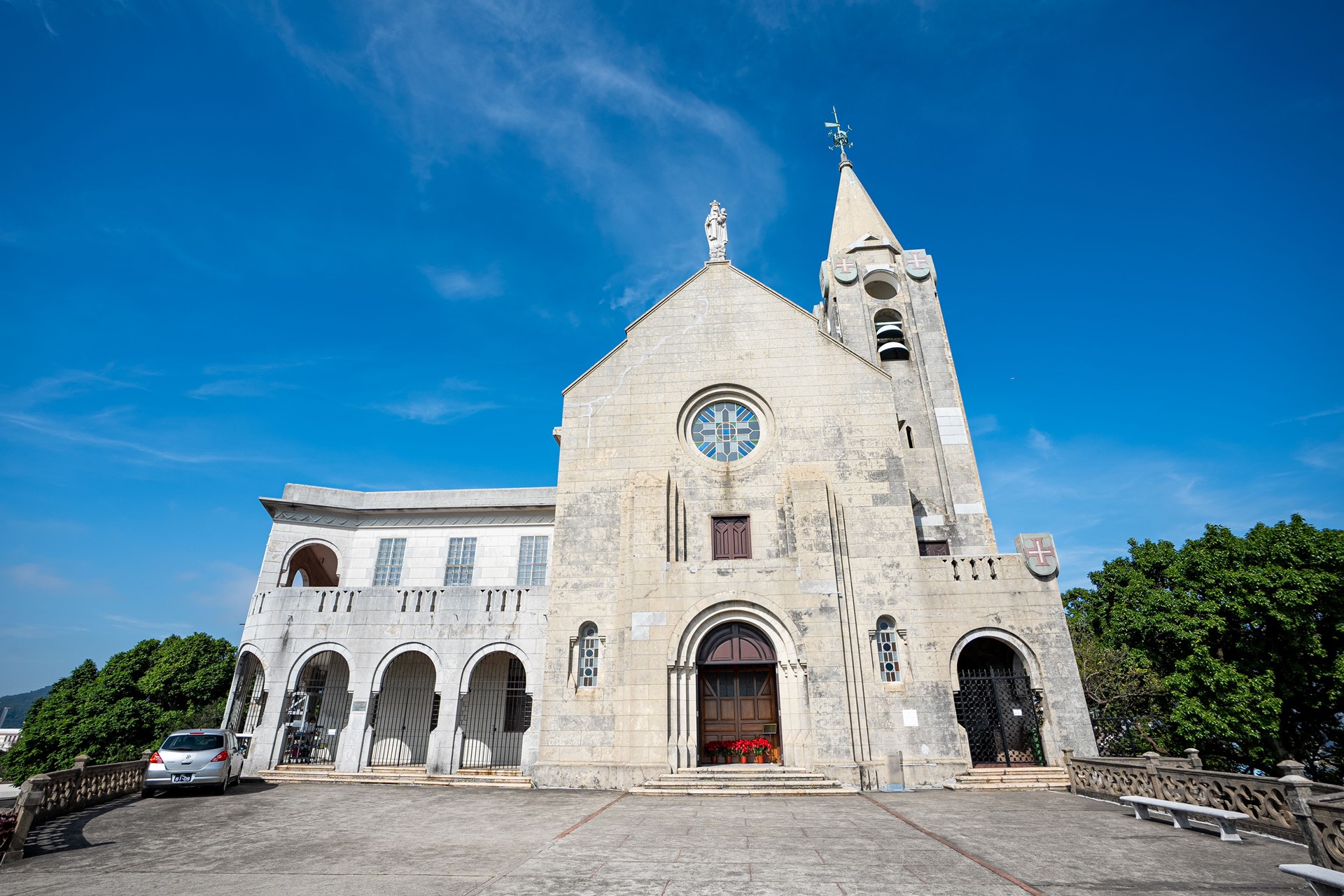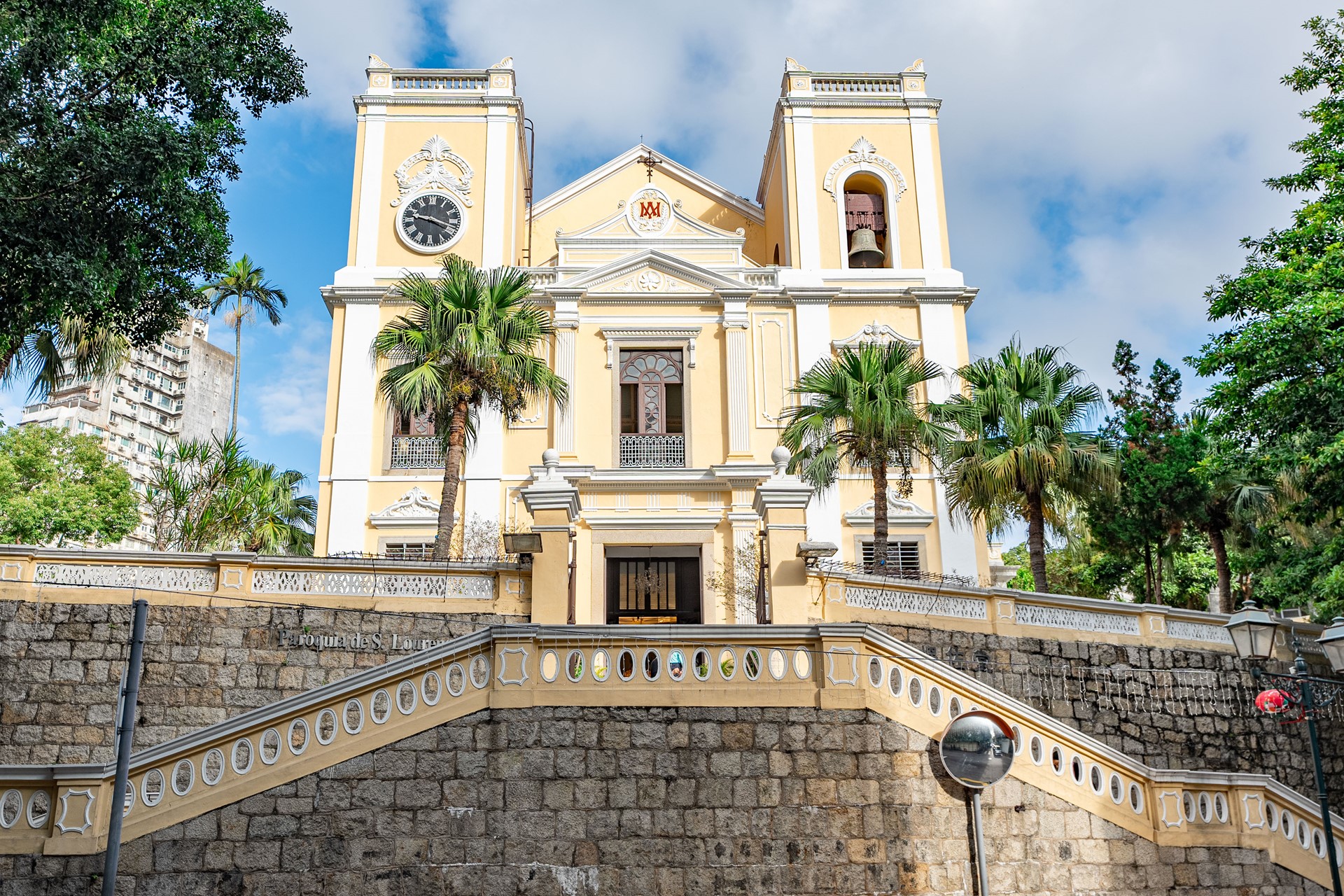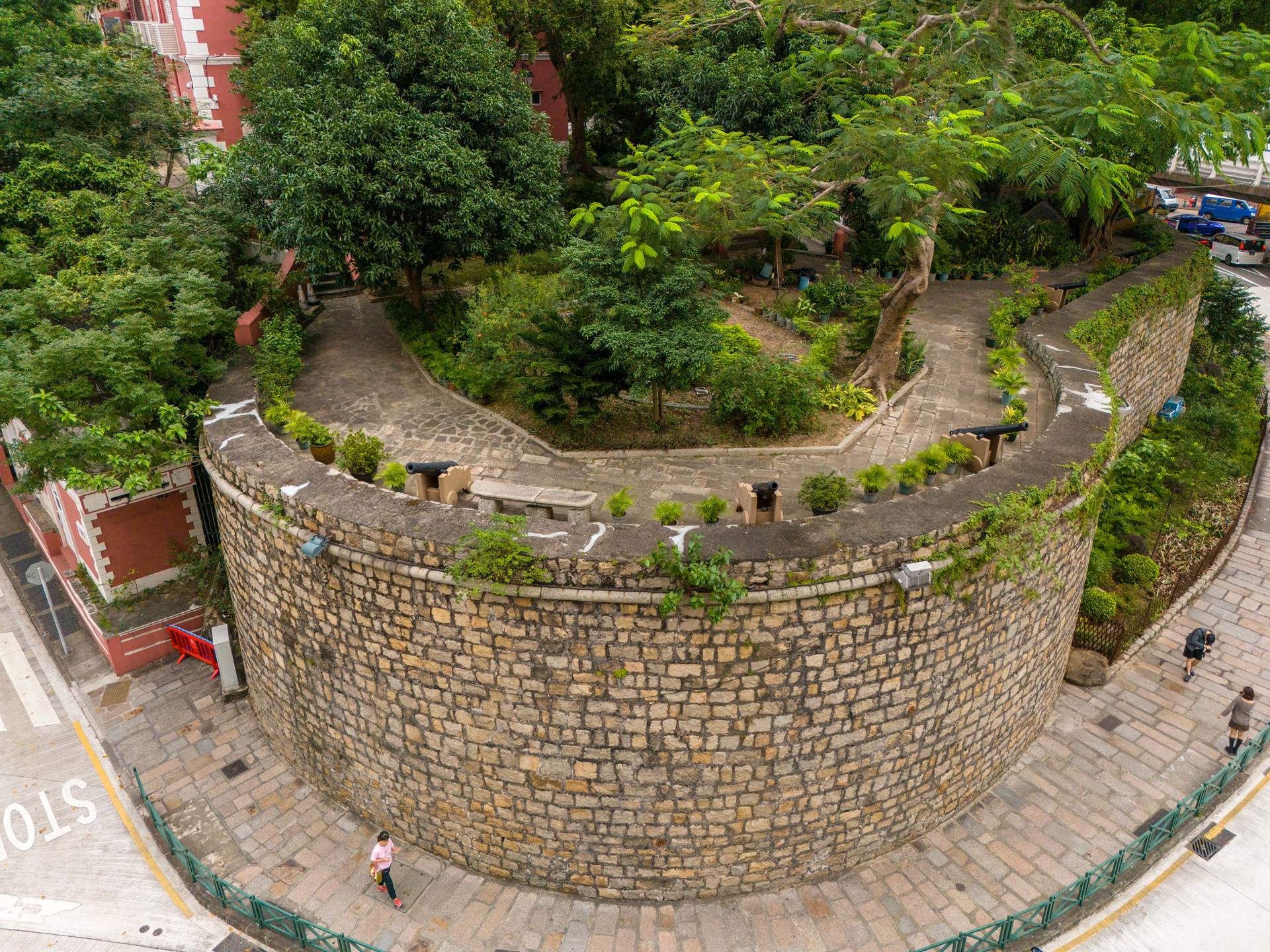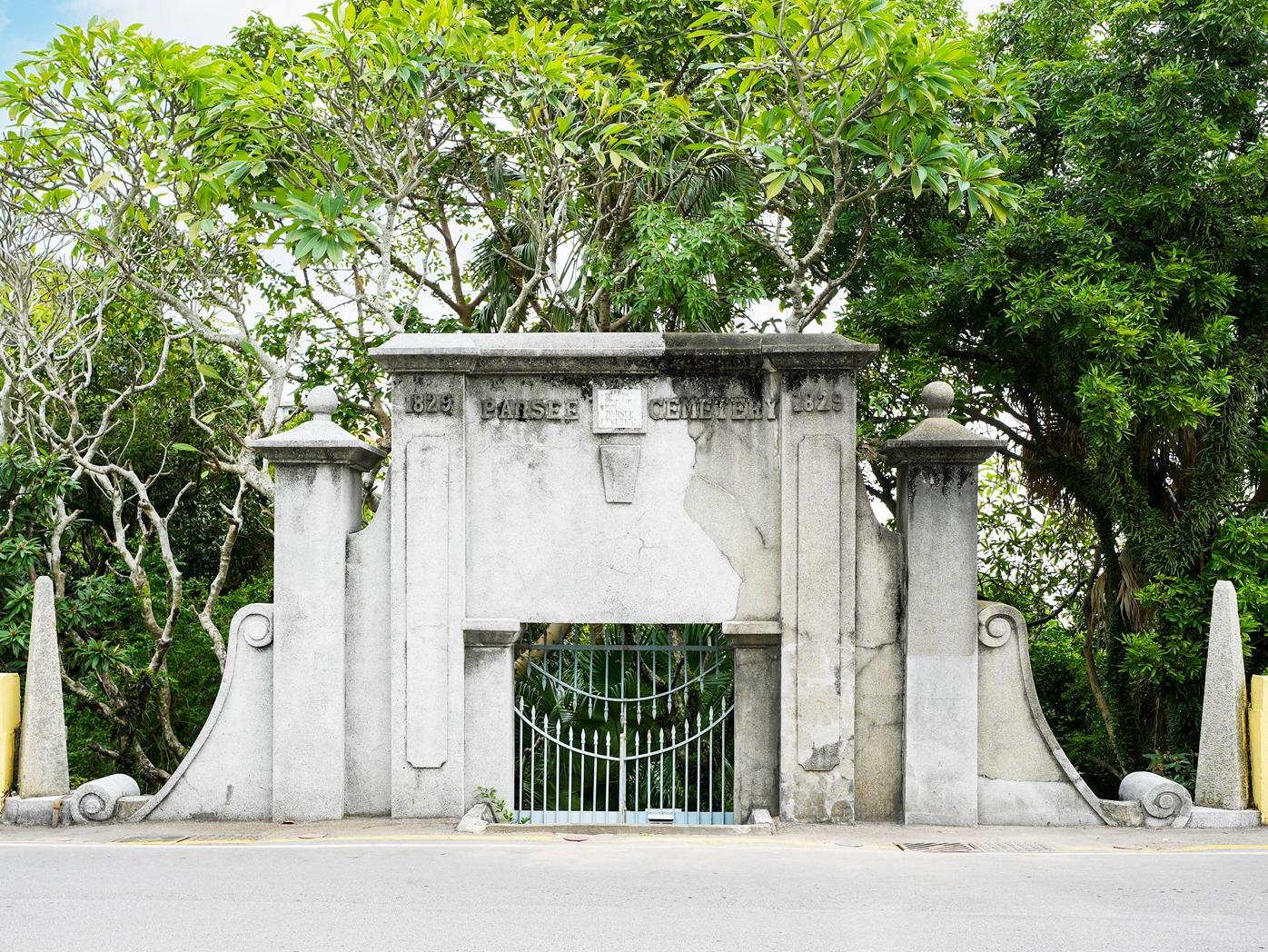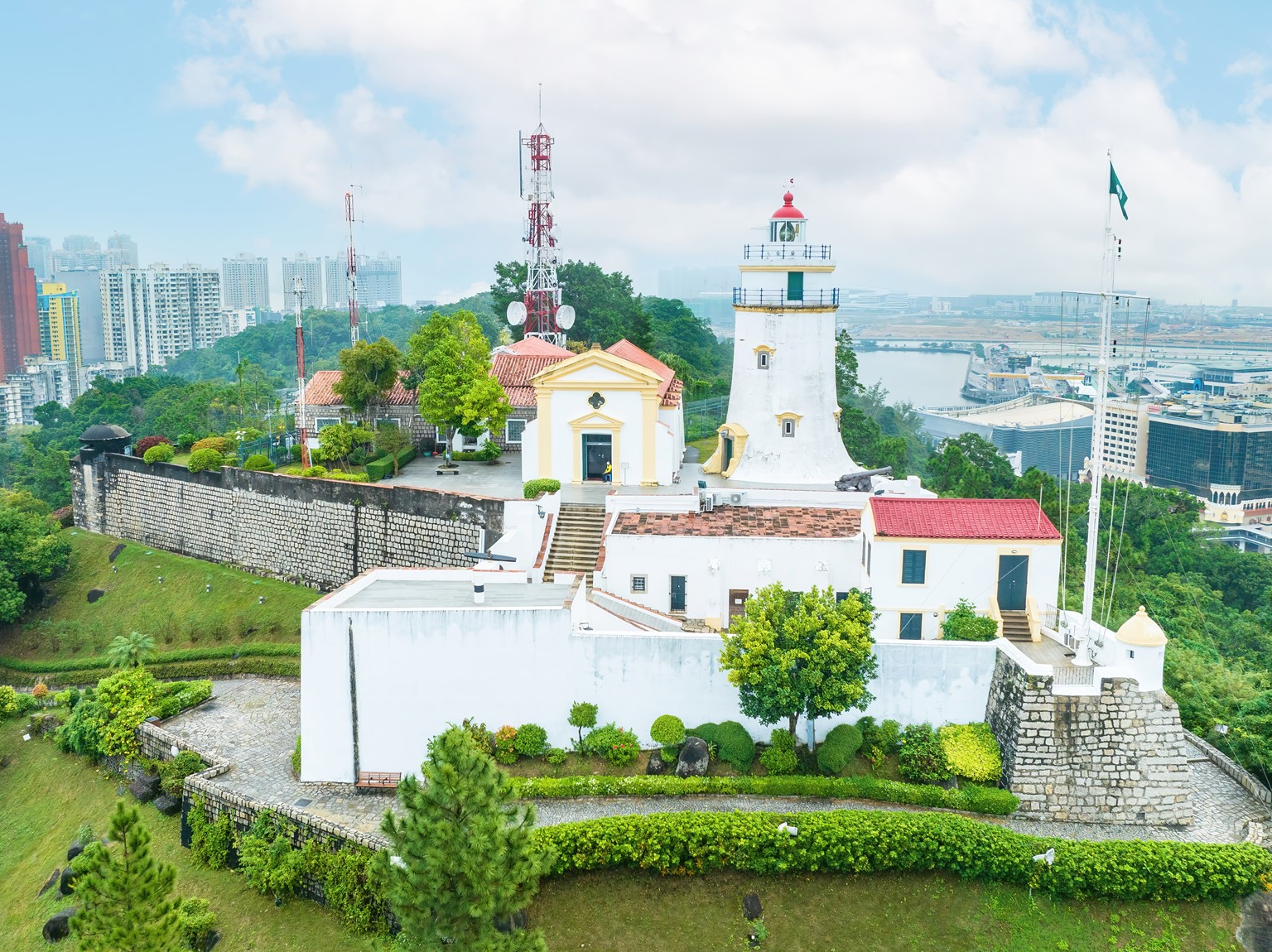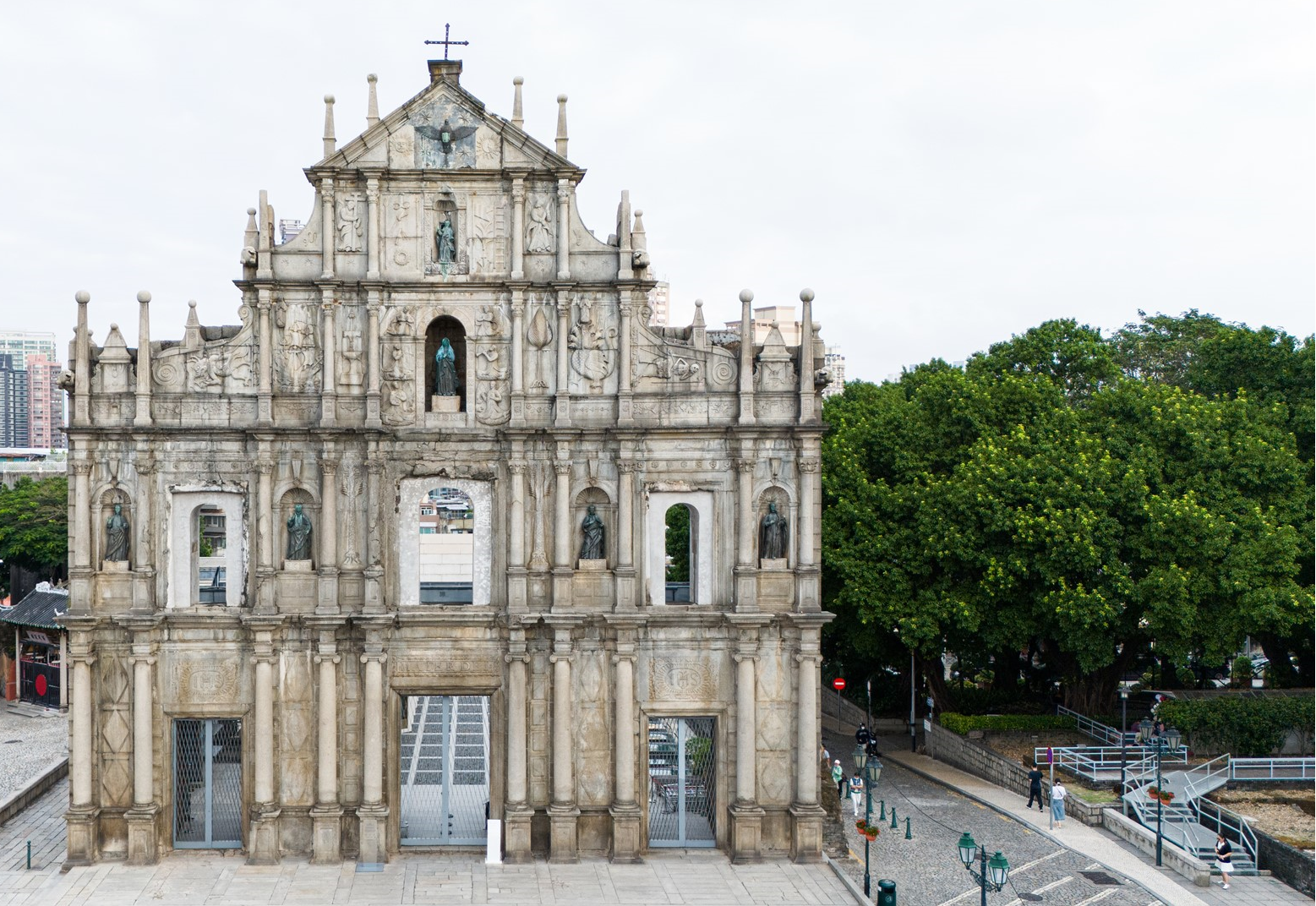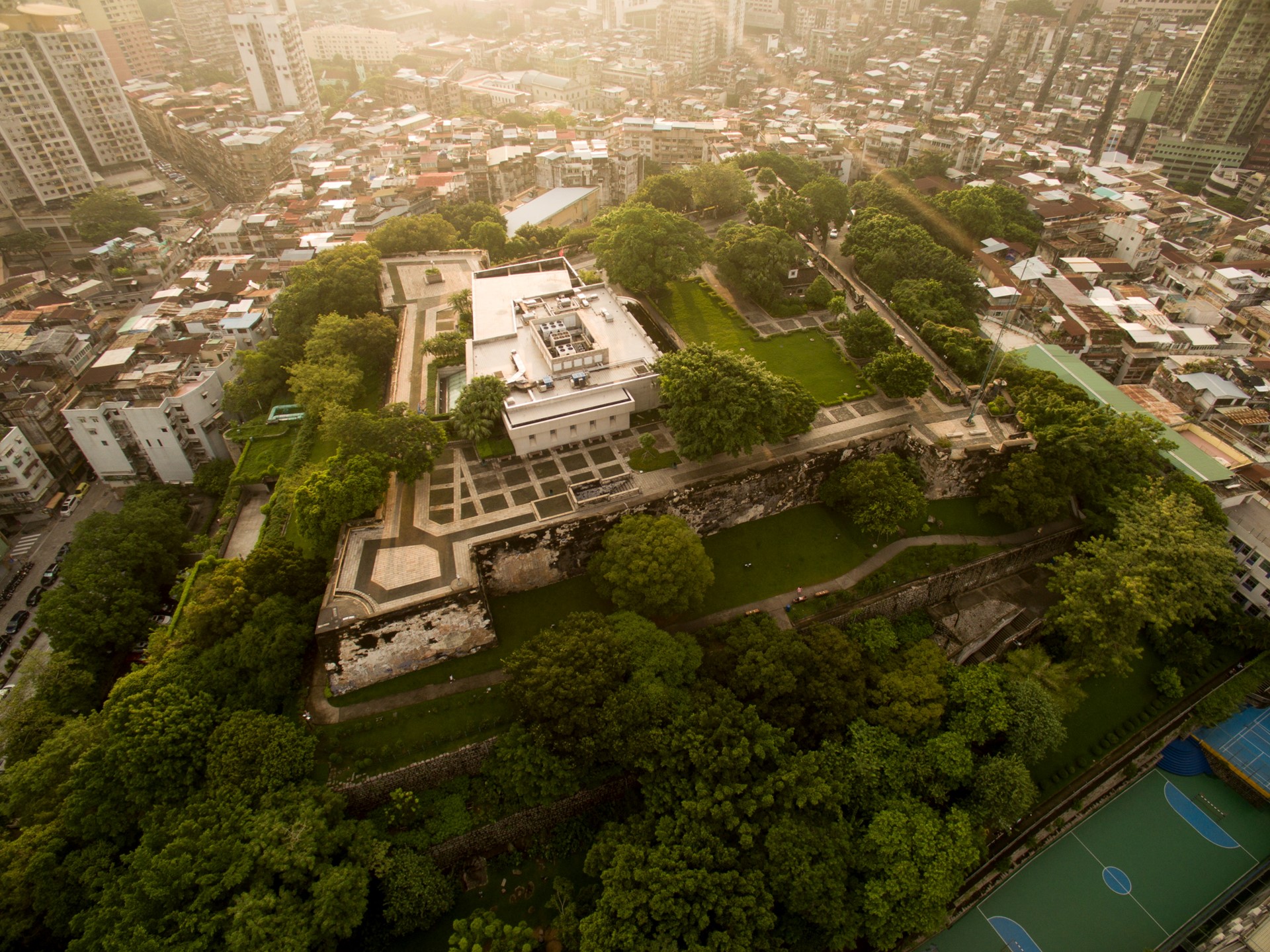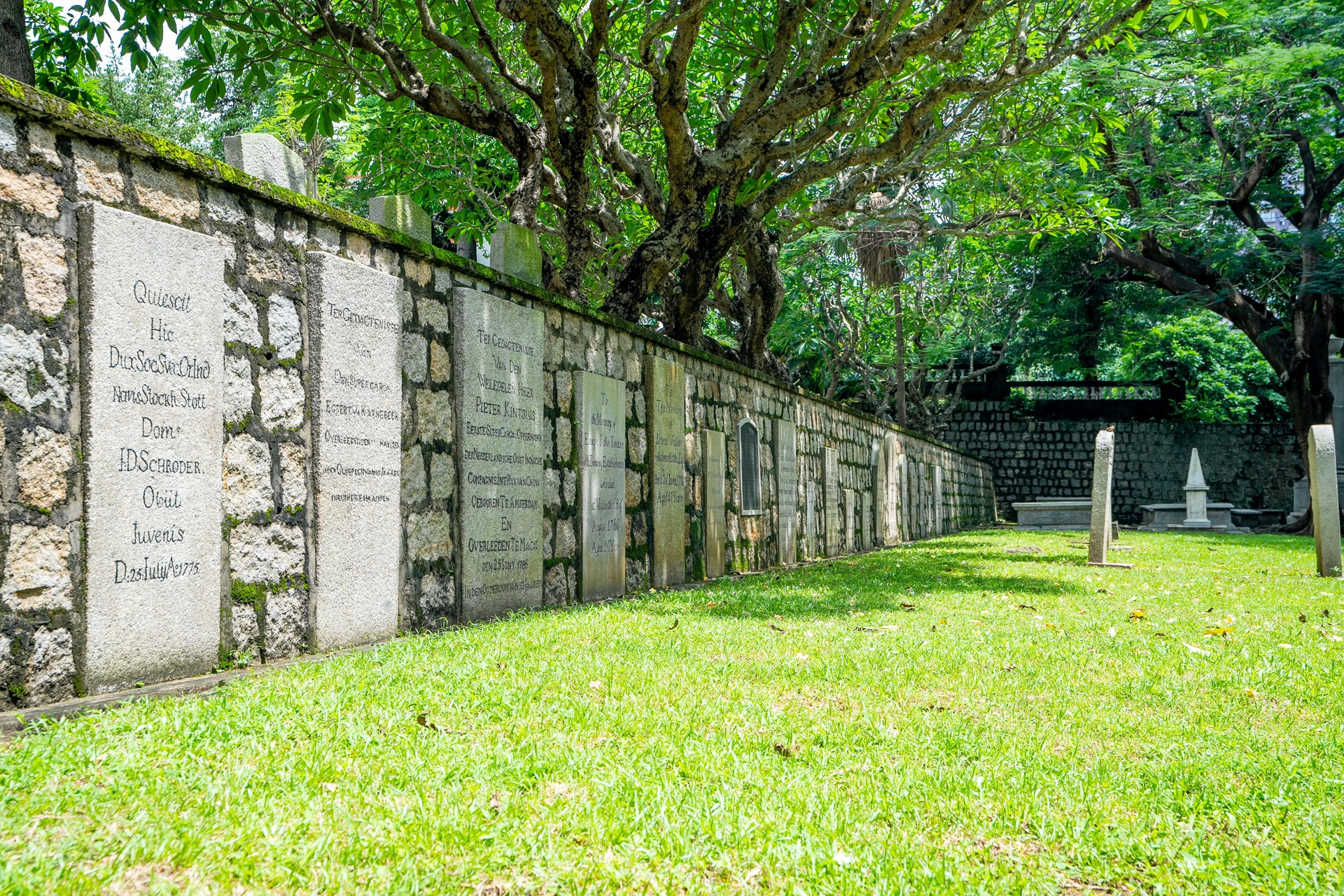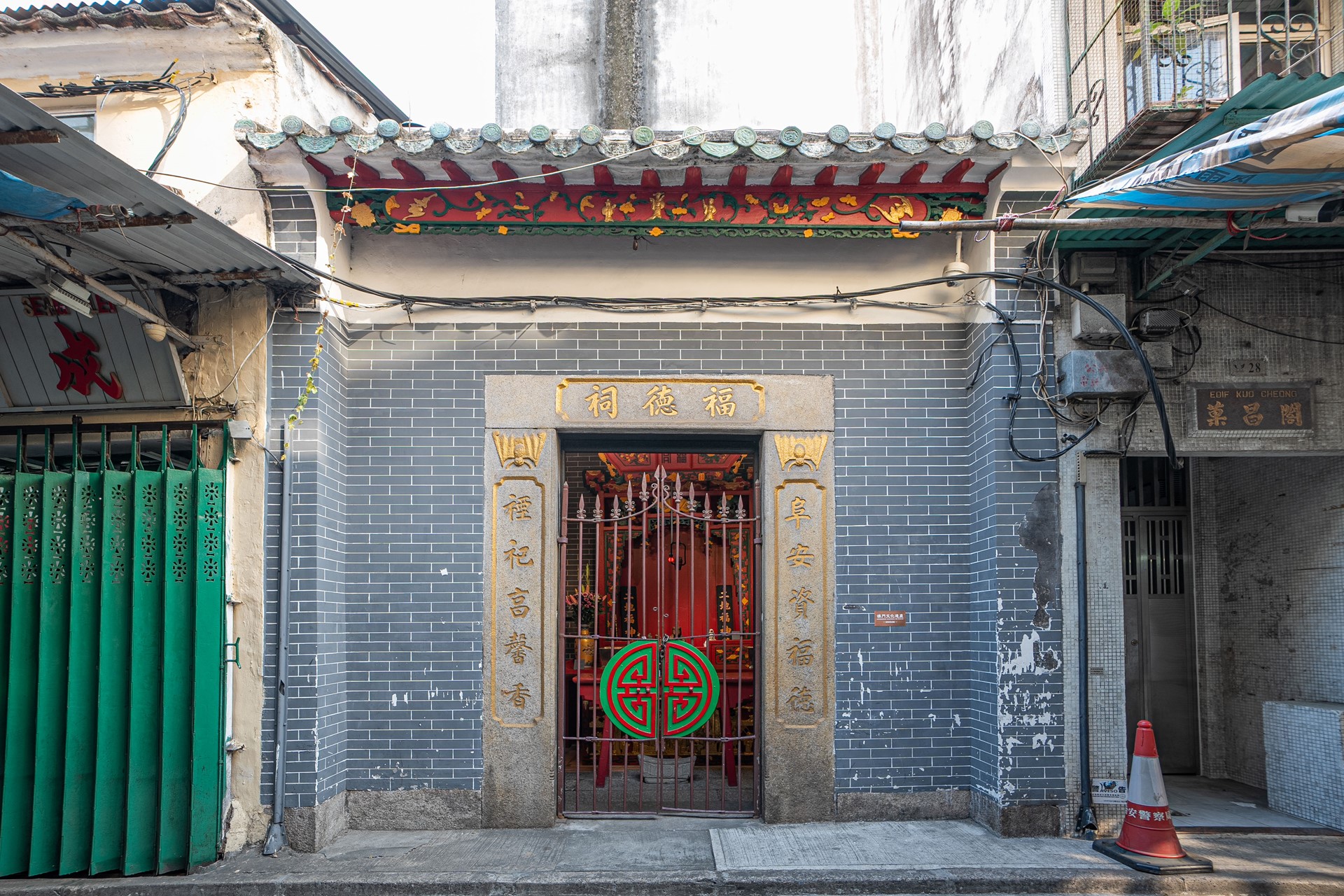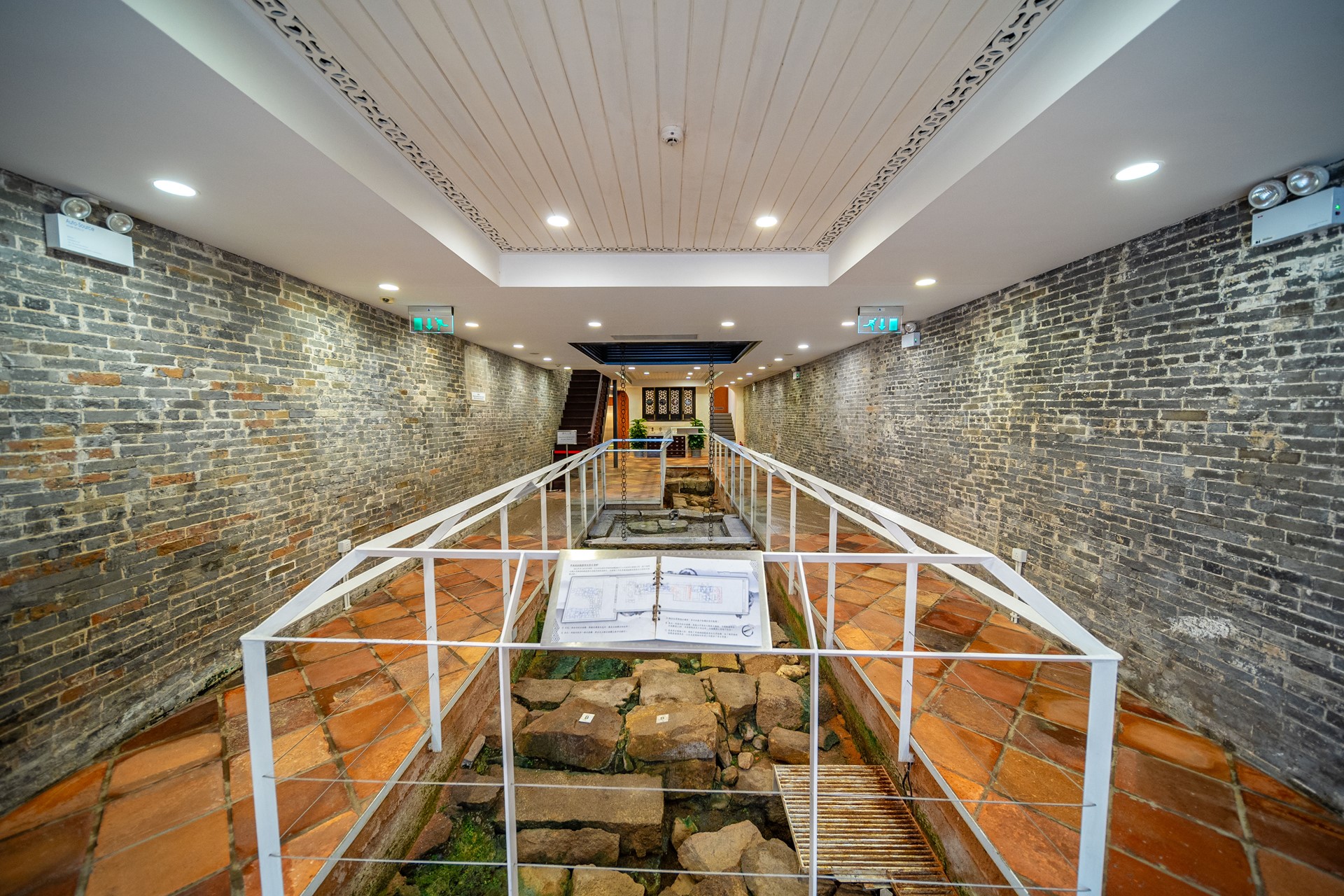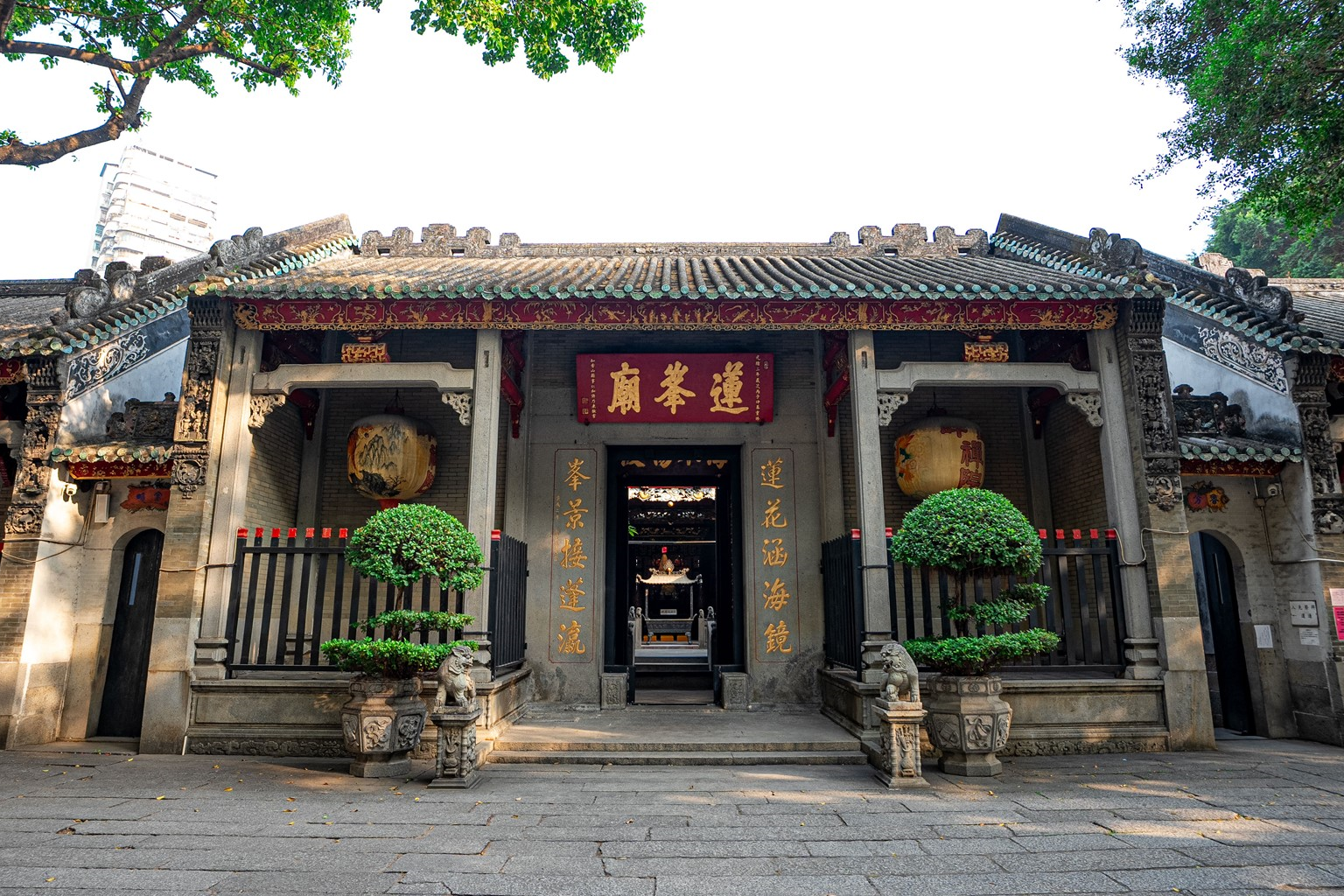Chapel of Our Lady of Penha is located atop the majestic and beautiful Penha Hill, which is also known as Bishop's Hill, since the site also served as a former residence of the bishops of the Diocese of Macao. The built structure consists of a steeple, bell tower, a chapel in eclectic architectural style and the building of the former bishop's residence. The front yard of the chapel features a marble statue of the Virgin Mary looking out to sea. Further ahead, there is a stone staircase leading to the Grotto of Our Lady of Lourdes. The said apparition of Our Lady in a grotto in the city of Lourdes, in France, led to the reproduction of similar church-grottos around the world, like this one, featuring a solemn architectural design located in a tranquil, elegant setting.
In 1620, the merchant ship S. Bartolomeu was sailing from Macao to Japan for trade and was caught in a storm. In that moment of danger, the merchants prayed to the Virgin Mary for protection, pledging to donate money to build a monastery in Macao if they survived. Eventually all managed to returned safely to Macao, and the fulfilled their promise to donate money to the Augustinian Order, for the building and management of a monastery on their behalf. As a result, the Chapel of Our Lady of Penha was built in 1622, followed by reconstructions in 1837 and 1935.
The bishops of the Diocese of Macao, from Bishop João Paulino de Azevedo e Castro onwards, chose the private residence to the left of the chapel as their abode, until Bishop Arquimínio Rodrigues da Costa moved out, marking the end of that building’s function as the bishop's residence. In 2009, the Diocese of Macao invited the nuns of the Order of Cistercians of the Strict Observance (OCSO), to use the chapel as their convent.
From the second half of the 16th century until the first half of the 17th century, Macao served as an important transshipment hub for Sino-Japanese trade. Against the backdrop of the Chinese Imperial sea ban at the time, Macao became the only port along China’s coast that was allowed to trade with Japan. The trade route between Macao and Nagasaki was an important part of the Portuguese trading network in Asia. Before the installation of Portuguese governors in Macao, the Captain-Major of the ship that was licensed for that voyage was the representative of the King of Portugal in China. Therefore, the historic background of the Chapel of Our Lady of Penha is intimately linked with the Sino-Japanese trade routes of the Maritime Silk Road.
The Procession of Our Lady of Fátima takes place on 13 May of each year, celebrating the apparitions of Our Lady of Fatima in Portugal, in 1917. With recitations of rosary and singing of hymns along the way, this procession slowly makes its way from St. Dominic’s Church to Penha Chapel, in a very impressive religious parade event. It is one of the most highly distinctive, religious celebrations in Macao.

